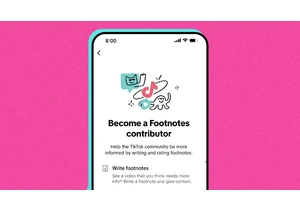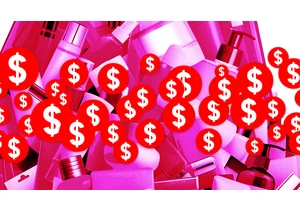With more than 2 million civilian employees, the federal government counts itself as the largest employer of people in the United States. President Biden has issued several executive orders directing his administration to overhaul its hiring practices, procurement, and policies to address systemic racism and inequality. Here, Deloitte Consulting LLP managing director Shrupti Shah, who has advised governments on developing outcome-oriented strategies and the monitoring and managing of performance in more than a dozen countries, explains how the government can be a catalyst for change. Before President Biden’s series of executive orders, had the federal government ever explicitly addressed racial disparities on this scale? Shrupti Shah: The federal government has a long history of taking bold actions to advance diversity, equity, inclusion, and accessibility. But that doesn’t diminish the Biden administration’s ambitions. The executive orders specifically reference advancing racial equity, supporting underserved communities of color, addressing discriminatory housing policies, phasing out the use of private criminal detention facilities, and advancing diversity, equity, and inclusion in the federal workforce—not to mention, centering equity and inclusion at the heart of policymaking. The administration seeks to address inequity in many facets of our society. What were some blind spots in previously addressing these issues? When it comes to blind spots, one of them is thinking that if someone invents a policy and writes something down, that equals impact. Another is going it alone. Government leaders need to work across their agencies and with state and local governments to think holistically and drive progress. They need data to identify where disparities exist. They need to understand what’s working and for whom. But they also need to recognize it’s not a blank page—agencies, institutions, and organizations have been gathering data and insights to improve outcomes for decades. Leaders can start by collaborating with those organizations to scale up cost-effective policies and programs that are already proven to work. Once we have that, we can create strategies to manage those inequities—in health, in criminal justice, and more. But that still isn’t enough. A huge part of the job is managing the results—focusing on implementation, measuring impact along the way, and course correcting, if necessary, because this isn’t a short-term process. It will take decades to address these structural and systemic inequities in our society. How does Deloitte’s model for delivering equity work? Our equity-activation model works across what we call the three “spheres of influence,” starting with the public-sector workforce, then vendor ecosystems—with a focus on procurement—and, finally, communities and societies, which includes policymaking and service delivery. Each sphere, in turn, includes multiple “activators”—key areas through which government can exert its influence to achieve equity. And then there are organizational enablers spanning those spheres, helping to drive accountability—things like leadership governance, resource allocation, and legal risk compliance. How do the three spheres interact and reinforce each other? Can you provide some examples? Sure. Within the workforce, we’ve seen good practices in reevaluating what success looks like in terms of identifying talent and making an effort to sponsor and mentor employees. For example, in June 2020, the Secretary of Defense outlined nine immediate steps to reduce discrimination in the armed forces. These steps included removing photographs from the selection processes, reviewing hairstyle and grooming policies, and identifying other patterns of prejudice and bias. In procurement, the leading practices focus on attracting and developing a diverse range of suppliers. This not only includes the government’s role as a buyer but how it can also be a market maker for small, minority-owned businesses. The city of Asheville, North Carolina, for instance, recently created annual goals for hiring minority- and women-owned businesses and now keeps a database of firms certified for government work. And when it comes to policies, government can promote equity through its role as a policymaker. This is the area where it can make the biggest impact on society. Identifying rules and policies that place disproportionate burdens on disadvantaged communities is critical. That’s where AI can also help in analyzing our huge body of rules to discover discriminatory practices. Chicago’s Department of Housing, for example, established a racial equity impact assessment that analyzes data to find out how different racial and ethnic groups are affected by proposed or existing programs, policies, or decisions. Alongside policies, leaders also need to reimagine citizen service delivery by providing personalized design features and capabilities. This not only means investing in culturally sensitive outreach to ensure that people have access to the services they need but also engaging directly with individuals and families to help design programs and services to better meet the public’s needs. While these efforts are being directed at the federal level, how can they be a force multiplier for more local counterparts? The federal government has a special convening power as a catalyst for change. It can be the center of a call to action and corral other levels of government into a coordinated response. It also has access to data and capabilities at the national level that offer visibility into what’s working, which can help it expand those practices and be an enabler for change. One state might be effective in housing, and another state might be successfully tackling disparities in educational outcomes. The federal government can step in and help connect state and local leaders with critical information and resources. That’s a big deal. It can make a meaningful difference for state or local governments working to deliver timely and effective public services. The final area is changing the ruleset. The federal government guides local policies and practices through its funding. Holding those who dispense the funds accountable for disparities in outcomes is also a powerful lever for change. How should the government measure the success of these efforts? Ultimately, we need to change from measuring inputs to measuring outcomes, starting with the really big picture: How do we shrink the disparities in life expectancy, social mobility, and criminal justice? Are we closing the income gap? You have to start there. But since you can’t measure these metrics on a daily basis—because meaningful change takes decades—you need to create theories of change for each. For example, what’s our strategy for addressing educational outcomes? And then you get down to measurement. But it all starts with those ultimate outcomes and learning what’s driving them, because understanding and refining what’s working is a continuous process.
As used in this document, “Deloitte” means Deloitte Consulting LLP, a subsidiary of Deloitte LLP. Please see www.deloitte.com/us/about for a detailed description of our legal structure. Certain services may not be available to attest clients under the rules and regulations of public accounting. This publication contains general information only and Deloitte is not, by means of this publication, rendering accounting, business, financial, investment, legal, tax, or other professional advice or services. This publication is not a substitute for such professional advice or services, nor should it be used as a basis for any decision or action that may affect your business. Before making any decision or taking any action that may affect your business, you should consult a qualified professional advisor. Deloitte shall not be responsible for any loss sustained by any person who relies on this publication. Copyright © 2021 Deloitte Development LLC. All rights reserved.
Melden Sie sich an, um einen Kommentar hinzuzufügen
Andere Beiträge in dieser Gruppe

Amid tariff whiplash and the rejuggling of global trade, GE Vernova’s CEO Scott Strazik is finding a way to stay “relentlessly optimistic.” Strazik returns to the Rapid Response podcast to share h

Tesla‘s electric-vehicle registrations in California dropped 15.1% during the first quarter, industry data showed, signaling an

TikTok is launching its own version of community notes on the platform, called “Footnotes.”
The crowd-sourced approach to moderation, where users add additional context to p
MrBeast has again defended his philanthropy‑as‑content, clapping back at critics who say he is “only in it for the views.”
On April 13, in a post on X, Jimmy Donaldson—better k

Meta CEO Mark Zuckerberg once considered separating Instagram from its parent company due to worries about antitrust litigation, a


If you’re planning to see the new Minecraft movie and haven’t heard of the viral “chicken jockey” trend w
